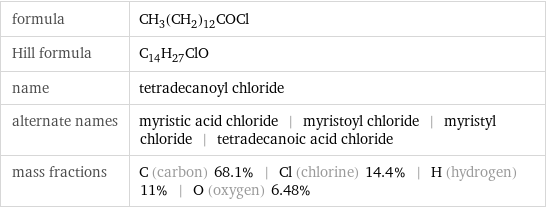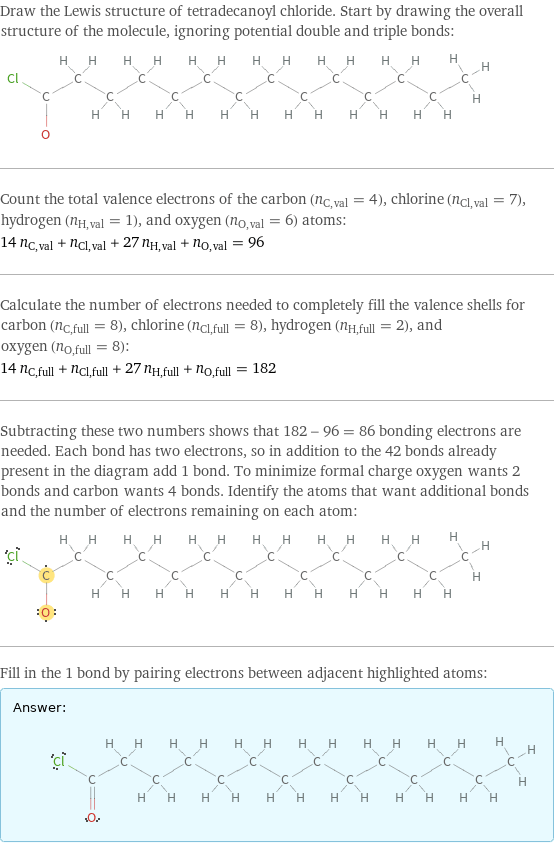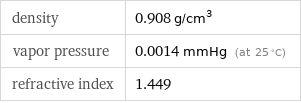Input interpretation

tetradecanoyl chloride
Chemical names and formulas

formula | CH_3(CH_2)_12COCl Hill formula | C_14H_27ClO name | tetradecanoyl chloride alternate names | myristic acid chloride | myristoyl chloride | myristyl chloride | tetradecanoic acid chloride mass fractions | C (carbon) 68.1% | Cl (chlorine) 14.4% | H (hydrogen) 11% | O (oxygen) 6.48%
Lewis structure

Draw the Lewis structure of tetradecanoyl chloride. Start by drawing the overall structure of the molecule, ignoring potential double and triple bonds: Count the total valence electrons of the carbon (n_C, val = 4), chlorine (n_Cl, val = 7), hydrogen (n_H, val = 1), and oxygen (n_O, val = 6) atoms: 14 n_C, val + n_Cl, val + 27 n_H, val + n_O, val = 96 Calculate the number of electrons needed to completely fill the valence shells for carbon (n_C, full = 8), chlorine (n_Cl, full = 8), hydrogen (n_H, full = 2), and oxygen (n_O, full = 8): 14 n_C, full + n_Cl, full + 27 n_H, full + n_O, full = 182 Subtracting these two numbers shows that 182 - 96 = 86 bonding electrons are needed. Each bond has two electrons, so in addition to the 42 bonds already present in the diagram add 1 bond. To minimize formal charge oxygen wants 2 bonds and carbon wants 4 bonds. Identify the atoms that want additional bonds and the number of electrons remaining on each atom: Fill in the 1 bond by pairing electrons between adjacent highlighted atoms: Answer: | |
3D structure

3D structure
Basic properties

molar mass | 246.8 g/mol phase | liquid (at STP) melting point | -1 °C boiling point | 250 °C (measured at 13330 Pa) density | 0.908 g/cm^3 solubility in water | insoluble
Units

Liquid properties (at STP)

density | 0.908 g/cm^3 vapor pressure | 0.0014 mmHg (at 25 °C) refractive index | 1.449
Units

Thermodynamic properties

molar heat of vaporization | 53.6 kJ/mol specific heat of vaporization | 0.217 kJ/g (at STP)